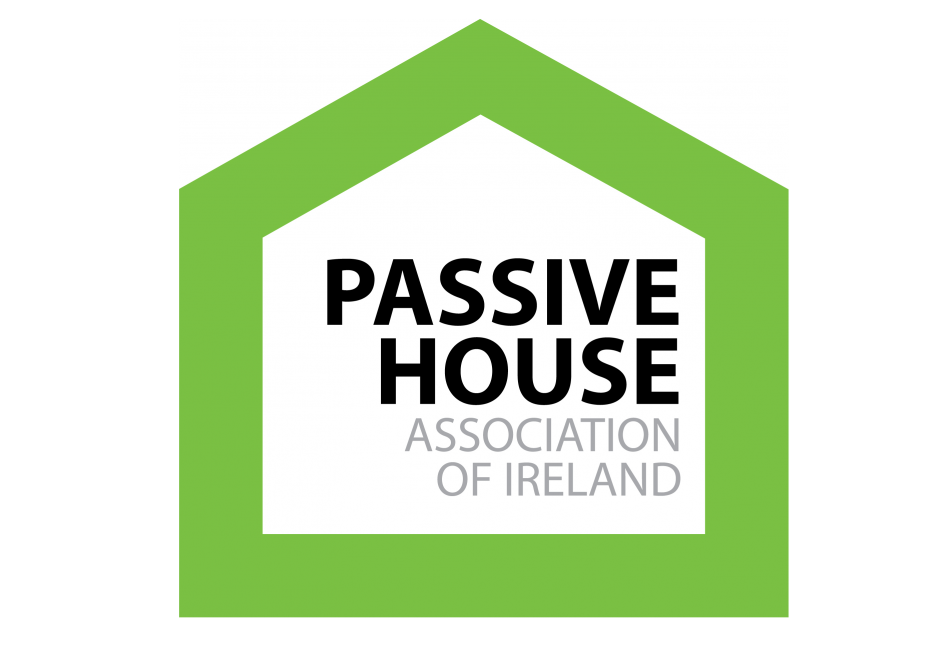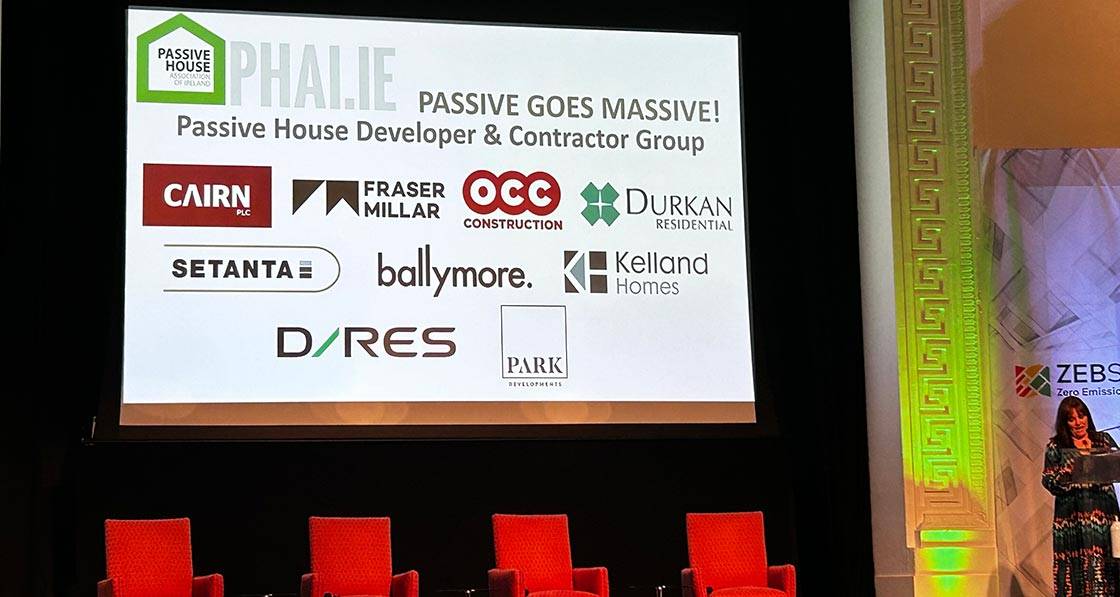
- Design Approaches
- Posted
Group of Irish house builders turn to passive house
This article was originally published in issue 47 of Passive House Plus magazine. Want immediate access to all back issues and exclusive extra content? Click here to subscribe for as little as €15, or click here to receive the next issue free of charge
Freshly elected Passive House Association of Ireland (PHAI) chair Caroline Ashe revealed details of the developer group at the ZEB Summit in the RDS on 22 February.
The group, which includes Ballymore Group, Cairn Homes, D/Res Properties, Durkan Residential, Fraser Millar, Kelland Homes, OCC Construction, Park Developments and Setanta Construction, was brought together by passive house experts MosArt.
Speaking to Passive House Plus, MosArt director Tomas O’Leary said: “The developer group emerged after it became clear that several different entities were investigating – in isolation – the potential application of passive house to their portfolio. Rather than everyone re-inventing the wheel, it would surely make sense to collaborate and share real-world experiences.”
The group first met for a knowledge-sharing session organised by MosArt’s director of growth and innovation, Stephen Donoghue, at the Maldron Hotel in Newland’s Cross on Bloom’s Day, 16 June 2023 – a date which may come to represent the anniversary of the passive house standard truly blooming in Ireland.
According to O’Leary, the fact that some of the developers in the room, such as Durkan Residential, Fraser Millar and Setanta Construction, already had experience of building passive helped up the ante. “I think it’s fair to say that the developers who had achieved passive house already lay down a challenge to the bigger players to give passive house a go, [saying] ‘If we can do it, so can you’,” said O’Leary. Contrary to some of the most common arguments against adopting passive house, cost didn’t trouble the group. “I recall a general agreement in the room that cost of going passive was not a major concern for any of the attendees,” said O’Leary. “It was more about delivering and achieving quality issues than loading on extra cost.”
O’Leary recalls pinching himself when the meeting ended. “I sat into the car afterwards with Stephen Donoghue, turned to him and said, “did that really just happen?” Having spent two decades of my career promoting, educating and drip-delivering passive house in Ireland, it looked like the dam was about to burst and the science-based approach to high performance housing was finally going mainstream.”
Reflecting on the Bloom’s Day meeting, Cairn’s head of sustainable construction and reporting, Stephen O’Shea, emphasised the role the developers who had already built passive played. “John Carrigan of Fraser Millar in particular spoke very well.” he said.
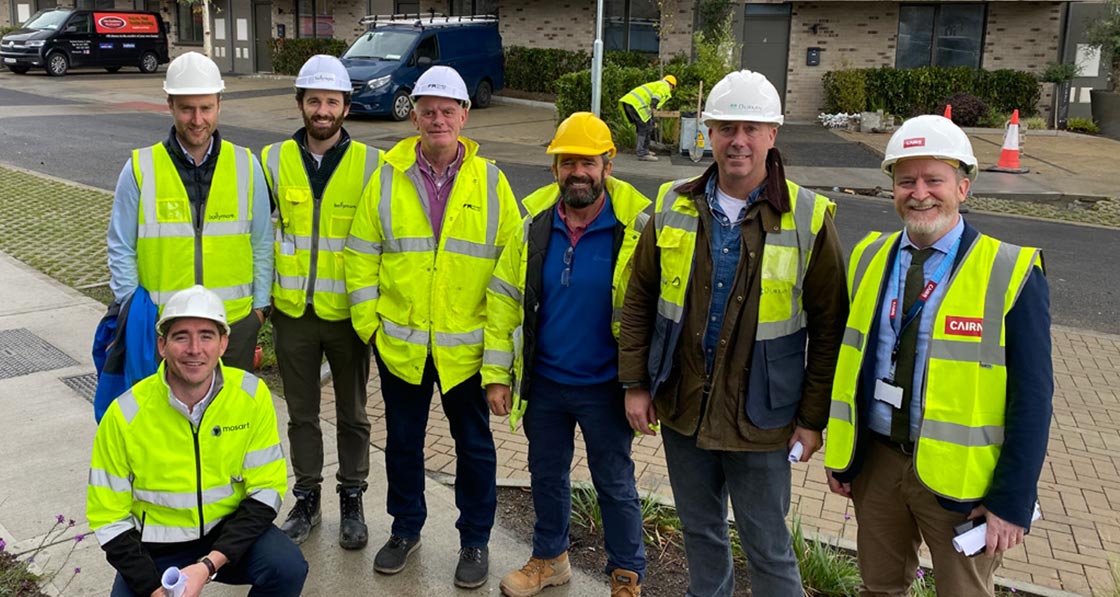
Pictured at Durkan Residential’s Egremont passive house scheme in Killiney are MosArt director Stephen Donoghue and (back row, l-r) Ballymore’s senior development manager Anthony Coakley and sustainability designer Charlie Conlan; Fraser Millar director John Carrigan; Setanta director Mark Gribbin; Durkan Residential director Barry Durkan, and Cairn head of sustainable construction Stephen O’Shea.
It looked like the dam was about to burst and the science-based approach to high performance housing was finally going mainstream.
The meeting was followed up with a site visit to Fraser Millar’s Lancaster Park scheme in Belfast on 24 July and Durkan Residential’s Egremont scheme in Killiney in October. “At that stage it was pretty much agreed that we would step out of the shadows at the upcoming ZEB Summit.” said O’Shea.
Perhaps the surest sign of developer engagement on passive house turning into tangible results is Cairn’s first passive house development, a 590-unit apartment scheme at Pipers Square, Charlestown, which is currently on site. “For us, this initiative delivers two key benefits; a dramatic reduction in the building’s carbon footprint, and significant benefits for the building’s owners and residents,” the company said.
As a large company, Cairn is mandated to report on emissions in several defined scopes under the Sustainable Financial Disclosure Regulations (SFDR), including scope 1 (emissions from sources owned by the company), scope 2 (emissions indirectly caused by the company’s energy use) and scope 3 (all other emissions indirectly caused by the company up and down its value chain). Speaking at the ZEB Summit, O’Shea said the decision to go passive would play a key role in helping the company reduce its scope three emissions, by reducing energy-related emissions from the users of the buildings it builds.
In a statement to Passive House Plus, Ballymore said: "Ballymore is thrilled to participate in the passive house movement here in Ireland. We see this as the modern benchmark in home performance. MosArt has played a key role in our passive housing journey to date, pushing our design and our supply chain to a standard that far exceeds norms of the industry.”
Related items
-
 #BuildingLife Series: Director at CORA Consulting Engineers, John Casey
#BuildingLife Series: Director at CORA Consulting Engineers, John Casey -
 Green homes and finance join forces for growth
Green homes and finance join forces for growth -
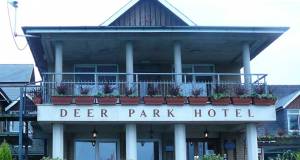 Hotel demolition judicial review could set embodied carbon precedent
Hotel demolition judicial review could set embodied carbon precedent -
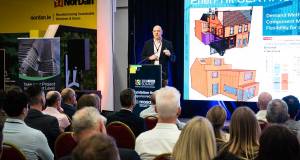 ZEB Summit celebrates Irish passive progress
ZEB Summit celebrates Irish passive progress -
 Irish and British associations unite for conference as passive house explodes
Irish and British associations unite for conference as passive house explodes -
 IGBC launches case studies to drive nature-led construction
IGBC launches case studies to drive nature-led construction


